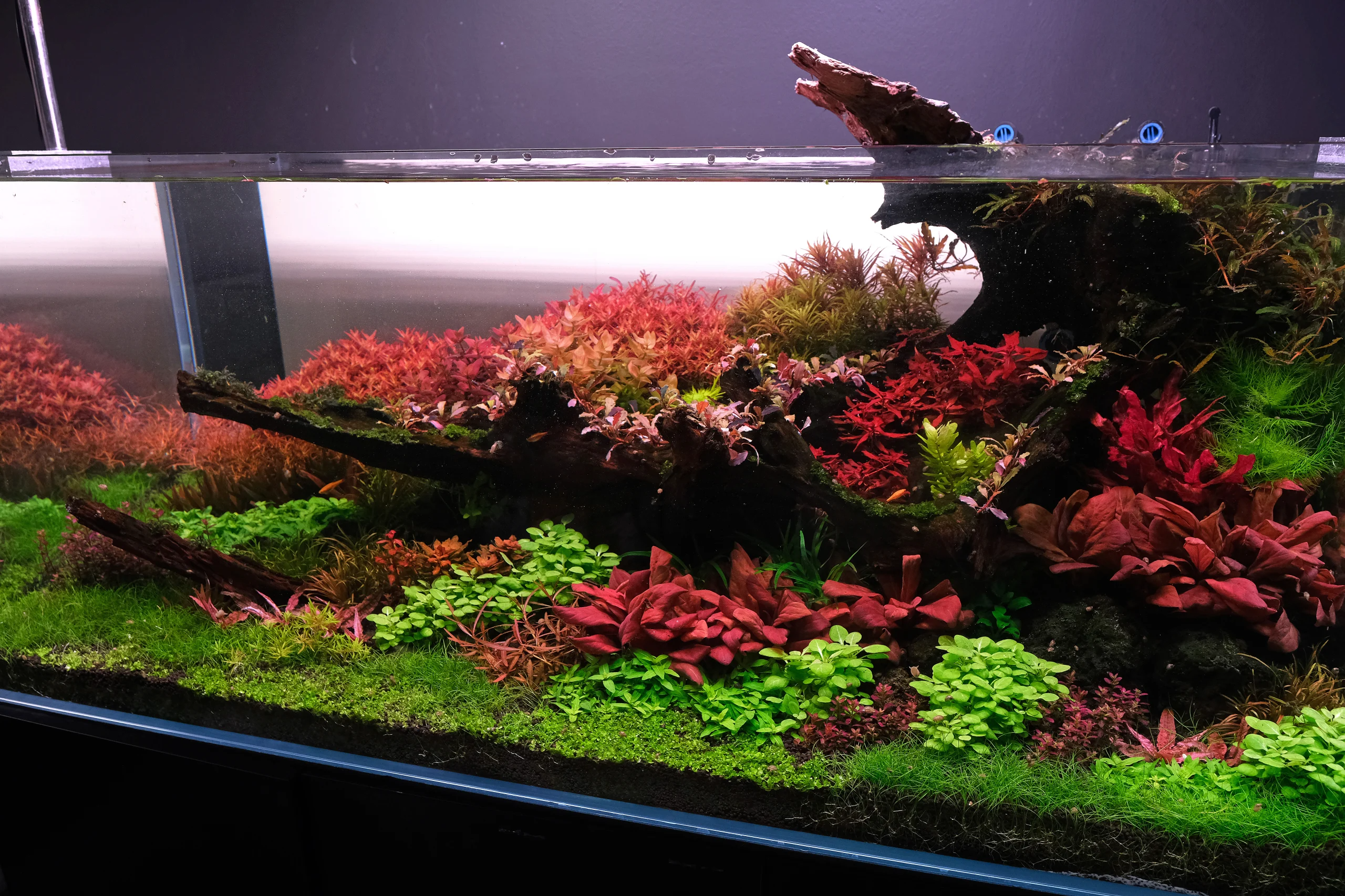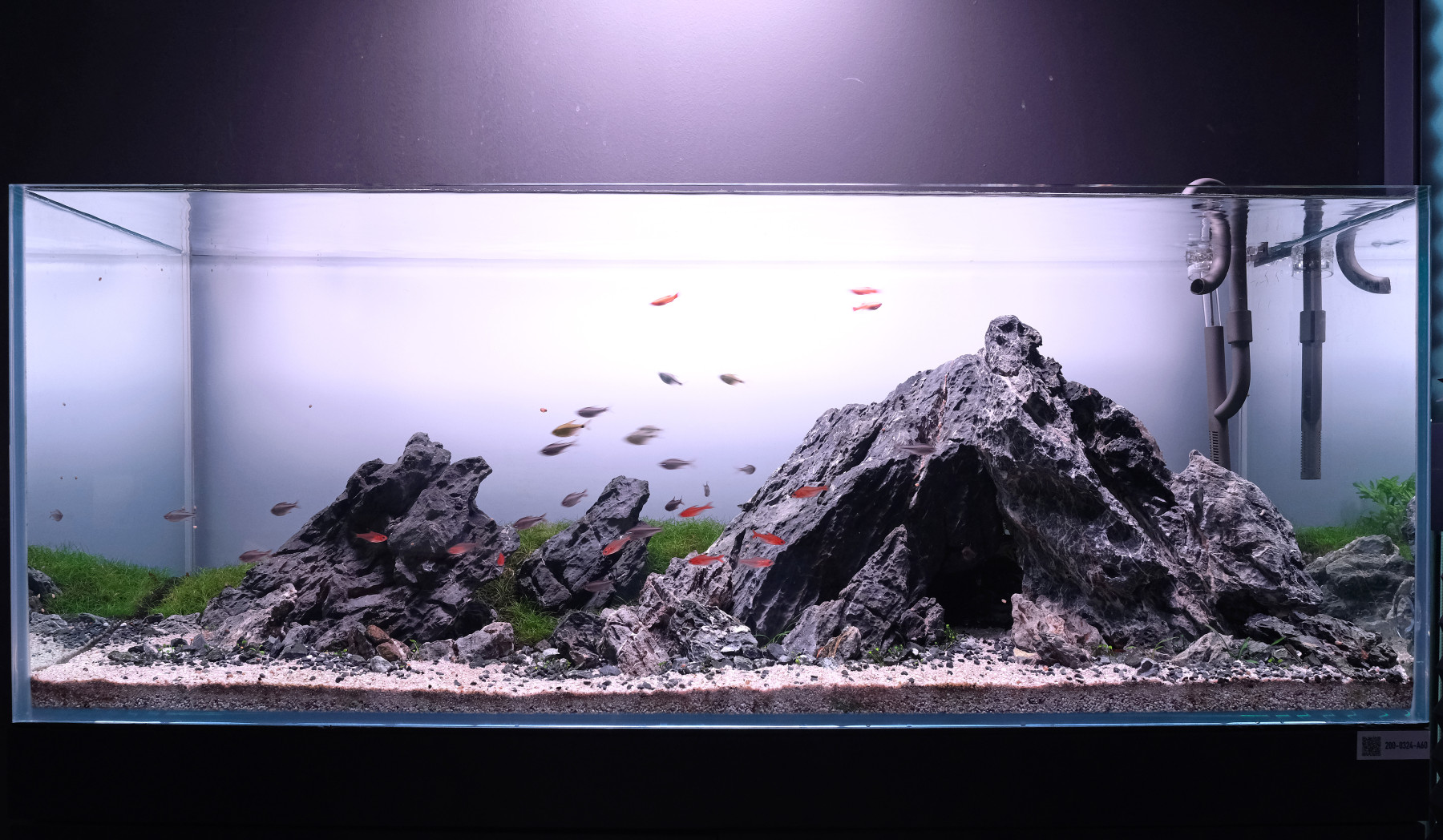Should I use APT 1, APT3 or APTe?Updated 2 months ago
APT 3 works well across a wide range of tanks. It provides an optimal balance of nutrition and algae control. It contains a comprehensive set of nutrients necessary for plant growth and does not require additional nutrition supplements.

APT 3 is slightly nitrate limiting in densely planted tanks, allowing certain species such as Ludwigia arcuata and Rotala rotundifolia variants to show deeper red coloration. This 360L tank above receives 10ml of APT 3 a day.
APT 1 contains everything in APT 3, except nitrates and phosphates. It should be used if you have a fish population that produces adequate nitrates in the tank (specifically, If your tank measures >5ppm NO3 on average- take a few readings, as they can vary at different times)
APT 1 can also be used to induce steep nitrate limitation in tanks, which gives the deepest reds in species such as Rotala rotundifolia and Ludwigia arcuata. This approach is usually paired with a rich substrate / APT Jazz to prevent long term stunting due to low nitrogen levels.
APT 1 can be used as a complete replacement for the ADA range of liquid fertilizers (Bright K neutral, Green brightly mineral and Green brightly iron).

We use APT 1 in this Iwagumi above. The carpeting plants get all their nitrogen and phosphorus from the aquasoil. The reduction of Nitrates and Phosphates in the water prevents the white rock surfaces from accumulating algae.
APT e would be your choice if you understand and seek to practise the Estimative Index (EI) approach to grow plants at a fast speed. EI has the highest risk of runaway algae issues if you have sub-par tank maintenance, sub-optimal CO2 levels or low plant mass. It is suitable for fully planted tanks where plant mass and density is high.
Check out these products here.